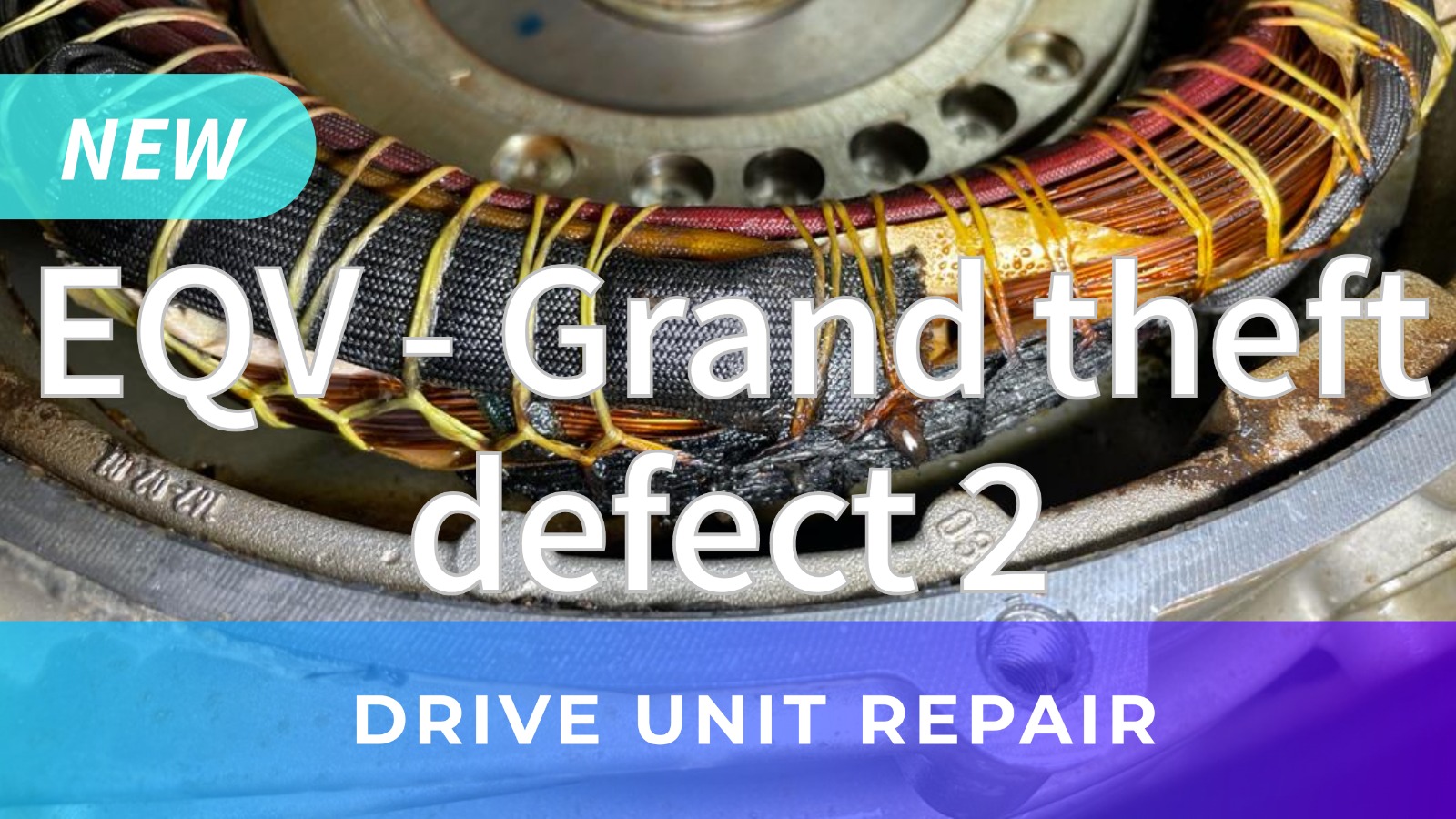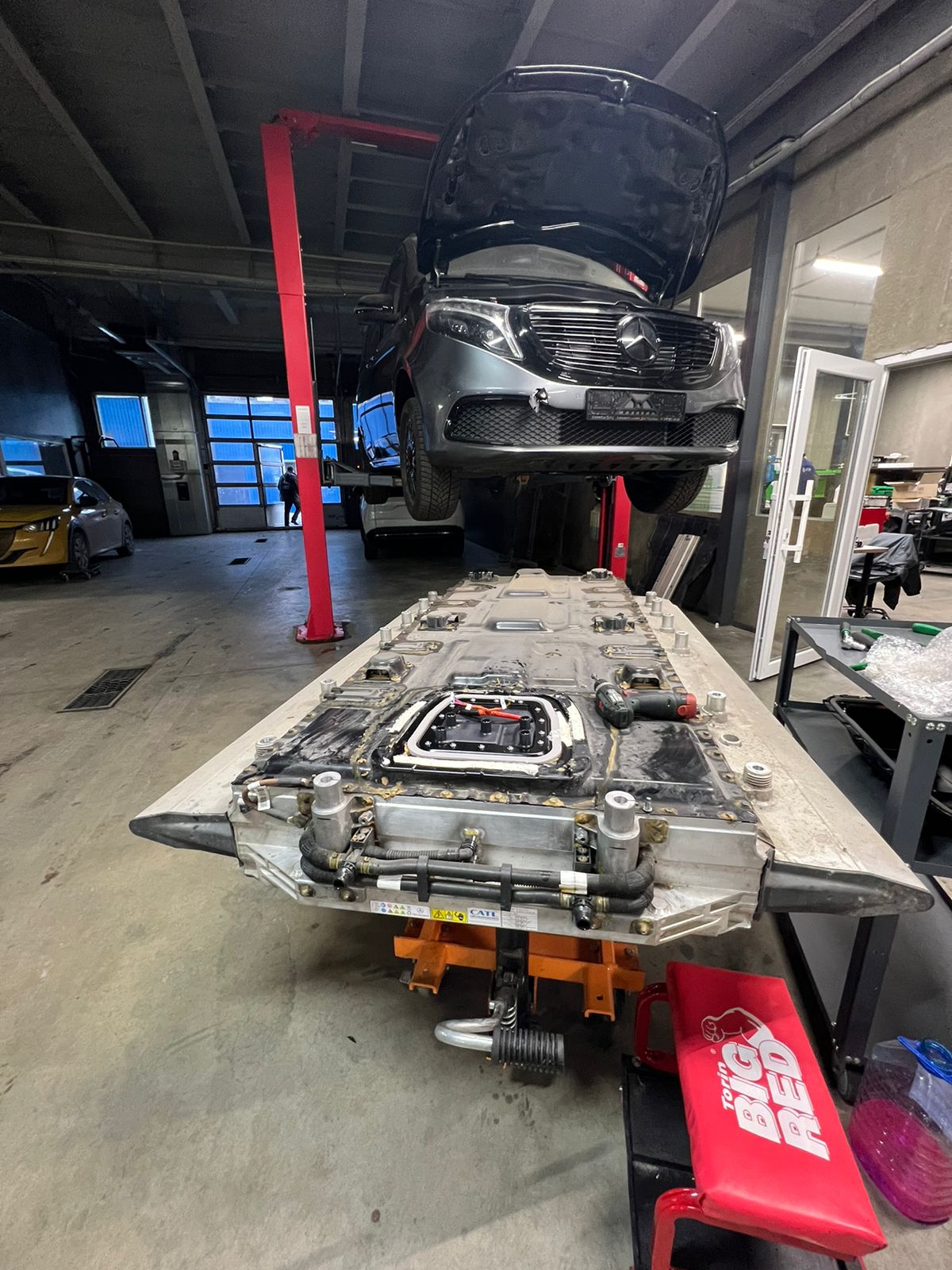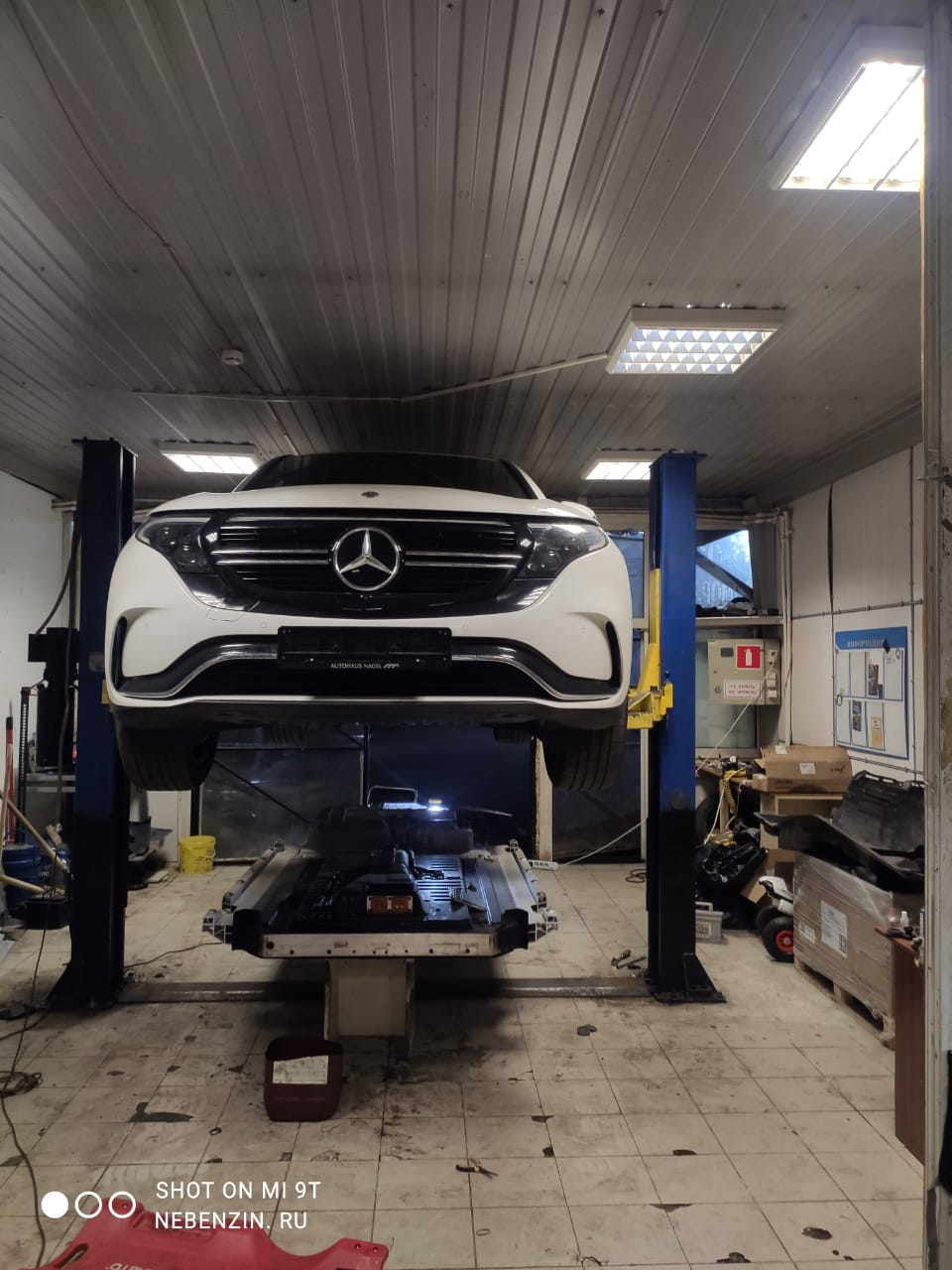
Challenges with the EQV Electric Motor: Insights and Observations
Over the past decade, experiences with vehicles under the three-pointed star emblem have highlighted recurring challenges, regardless of the type of drivetrain—be it diesel, hybrid, or electric. These challenges often stem from design oversights that can lead to serial defects, with warranty coverage that leaves owners feeling unsupported.
A well-known courier service, which has integrated several Mercedes-Benz EQV vehicles into its fleet, recently faced such issues. One of their vehicles, with only 28,000 km on the odometer, experienced an electric motor failure. Despite being under two years old, the motor was not covered under warranty, leaving the owner with an estimated repair cost of €7,500.
Diagnosis and Repair Attempts
Upon conducting a system reset, the motor briefly resumed operation but deactivated again under minimal load, triggering a familiar “anomaly” error. Diagnostics, both independently and through authorized service, confirmed the electric motor as the root cause.
Dismantling the motor revealed its considerable size and weight—over 250 kilograms—including its steel housing. Despite its weight, the motor’s power output of 80 kW seems insufficient for a vehicle with a mass of 3,200 kg, raising concerns about underengineering for this specific application.
Upon inspection of the drive unit, which is reportedly manufactured by ZF in Serbia, coolant leakage was discovered within the stator. The cooling system, using antifreeze similar to early Tesla Model S designs, showed evidence of glycol entering the stator. Thermal expansion appeared to have cracked the insulation on the windings, leading to a short circuit and localized burning of one phase. Fortunately, the inverter remained undamaged.
Parking Lock Design and Its Impact
One of the more notable design challenges lies in the parking lock mechanism integrated into the electric motor. Each time the vehicle is parked and the parking function is engaged, even minor wheel movement causes the rotor to spin approximately nine times faster. Simultaneously, the parking lock engages, violently halting the rotor. This repeated action can lead to a cascade of issues:
- Bearing damage in the differential where the lock engages.
- Failure of the bearing at the opposite end of the rotor, compromising the coolant seal and allowing antifreeze leakage.
Despite having sensors capable of preventing this scenario, the system lacks the necessary safeguards to disable the parking lock when wheel movement is detected. Alternative solutions, such as an electronic parking brake, could mitigate these issues.
Insights and Recommendations
The EQV’s motor design raises questions about its long-term reliability, particularly in heavy vehicles. While other vehicles like the Renault Zoe or Smart use similar systems, the EQV’s mass amplifies these challenges. For owners of such vehicles, a key recommendation is to avoid engaging the parking lock while the vehicle is in motion. Instead, manually apply the brake before shifting into the parking mode to prevent potential damage.
For those considering an electric vehicle, opting for models with separate electronic parking brakes, rather than integrated parking lock systems, may offer longer motor lifespan and reduced maintenance risks.
Local Solutions and Opportunities
One positive aspect of electrification is the opportunity to support local economies and craftsmanship. In this case, the restoration, analysis, and parts procurement for the motor repair were completed within a 2-kilometer radius of the workshop, showcasing the potential for localized repair ecosystems to thrive outside the traditional fossil fuel industry’s monopoly.
Warranty Limitations
In this instance, the electric motor’s warranty, limited to two years, was a key barrier to cost-effective repair. For fleet operators and individual owners alike, understanding the scope of warranty coverage is crucial when investing in electric vehicles.
HRVATSKI:
Izazovi s električnim motorom EQV: Uvidi i preporuke
Posljednjih deset godina iskustva s vozilima pod znakom trokrake zvijezde ukazala su na ponavljajuće izazove, bez obzira na vrstu pogonskog sustava – bio to dizel, hibrid ili električni. Ti izazovi često proizlaze iz nedostataka u dizajnu koji mogu dovesti do serijskih kvarova, dok pokriće jamstva često ostavlja vlasnike bez podrške.
Jedna poznata kurirska služba, koja je u svoju flotu uvrstila nekoliko Mercedes-Benz EQV vozila, nedavno se suočila s ovakvim problemima. Jedno od njihovih vozila, s prijeđenih samo 28.000 km, doživjelo je kvar električnog motora. Iako je vozilo staro manje od dvije godine, motor nije bio pokriven jamstvom, što je vlasnika suočilo s troškom popravka od procijenjenih 7.500 €.
Dijagnoza i pokušaji popravka
Tijekom resetiranja sustava, motor je nakratko ponovno proradio, ali se ubrzo deaktivirao pod minimalnim opterećenjem, prikazujući poznatu grešku “anomalia”. Dijagnostika, provedena neovisno i u ovlaštenom servisu, potvrdila je da je uzrok problema električni motor.
Rastavljanje motora otkrilo je njegovu značajnu veličinu i težinu – preko 250 kilograma, uključujući čelični okvir. Unatoč težini, snaga motora od 80 kW čini se nedovoljnom za vozilo mase 3.200 kg, što dovodi u pitanje prilagođenost dizajna ovom specifičnom modelu.
Pregled pogonske jedinice, za koju se navodi da je proizvedena u ZF tvornici u Srbiji, otkrio je curenje rashladne tekućine unutar statora. Sustav hlađenja, koji koristi antifriz, sličan je dizajnu ranih Tesla Model S vozila, no u ovom slučaju, glikol je prodro u stator. Toplinska ekspanzija uzrokovala je pucanje izolacije na namotajima, što je dovelo do kratkog spoja i izgaranja jednog dijela faze. Srećom, inverter nije oštećen.
Dizajn mehanizma zaključavanja i njegov utjecaj
Jedan od značajnijih problema dizajna odnosi se na mehanizam zaključavanja u parkirnom položaju, koji je integriran u električni motor. Svaki put kada se vozilo parkira i aktivira parkirna funkcija, čak i minimalno kretanje kotača uzrokuje da se rotor okrene devet puta brže. Istovremeno, mehanizam zaključavanja nasilno zaustavlja rotor. Ovo ponavljano djelovanje može dovesti do kaskadnih problema:
- Oštećenja ležaja diferencijala na mjestu gdje se zaključavanje aktivira.
- Kvara ležaja na suprotnom kraju rotora, što ugrožava brtvu rashladne tekućine i uzrokuje curenje antifriza.
Iako sustav ima senzore koji bi mogli spriječiti ovu situaciju, nedostaju potrebne zaštite kako bi se deaktiviralo zaključavanje kada je detektirano kretanje kotača. Alternativna rješenja, poput električne parkirne kočnice, mogla bi ublažiti ove probleme.
Uvidi i preporuke
Dizajn motora EQV-a postavlja pitanja o njegovoj dugoročnoj pouzdanosti, posebno kod težih vozila. Dok drugi automobili poput Renault Zoe ili Smart koriste slične sustave, masa EQV-a dodatno pojačava ove izazove. Za vlasnike takvih vozila, ključna preporuka je izbjegavati aktiviranje zaključavanja dok je vozilo u pokretu. Umjesto toga, ručno aktivirajte kočnicu prije prebacivanja u parkirni položaj kako biste spriječili potencijalna oštećenja.
Za one koji razmatraju kupnju električnog vozila, preporučuje se odabir modela s odvojenim elektronskim parkirnim kočnicama, umjesto integriranih sustava zaključavanja, jer oni mogu osigurati dulji vijek trajanja motora i smanjiti rizik od skupih popravaka.
Lokalna rješenja i prilike
Jedan od pozitivnih aspekata elektrifikacije je prilika za podršku lokalnim gospodarstvima i obrtima. U ovom slučaju, obnova, analiza i nabava dijelova za popravak motora obavljeni su u radijusu od 2 kilometra od radionice, što pokazuje potencijal za razvoj lokalnih ekosustava popravaka izvan monopola fosilne industrije.
Ograničenja jamstva
U ovom slučaju, jamstvo na električni motor, ograničeno na dvije godine, pokazalo se ključnom preprekom za isplativ popravak. Za upravitelje flota i pojedine vlasnike, razumijevanje opsega jamstvenog pokrića ključno je pri ulaganju u električna vozila.
Part number: A4473402401, A4479004711, A4479013905, LE6000, A4473407600, 601-20857-00, 634-05058-03, 3840000462, M4160A1288, A4473400501, 7899019100, 2229021821, 7899045800,
Errors: P2C8500, Electric motor making noise,
Warranty: declined (2years)
Processor: TC277T
OEM Price: 7500€
EV Clinic Price: 2500-3500€























































